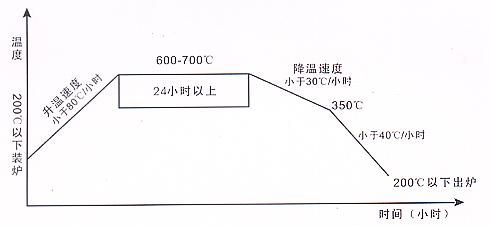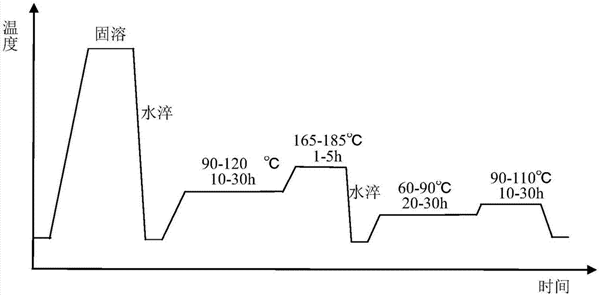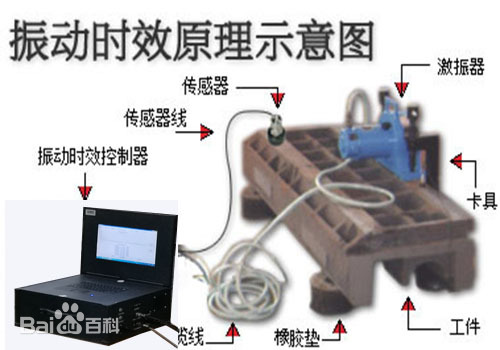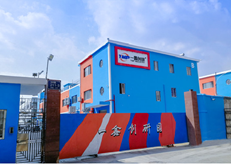In CNC machining, the term CNC "aging" often appears. So what is CNC "aging"?
In the field of CNC machining, in order to eliminate or reduce changes in size, shape, etc. of precision measuring tools and molds during long-term use, the workpiece is usually reheated to 100-150°C after the low-temperature tempering step and maintained for 5-20 hours. in between, and then carry out finishing. This operation to stabilize the quality of precision workpieces is called "aging." More importantly, under low temperature or dynamic load processing conditions, the original steel components undergo CNC aging treatment in order to stabilize the steel structure and size and eliminate residual stress.
Aging can generally be divided into several methods such as natural aging, artificial aging, thermal aging and vibration aging.
Natural aging means that castings are placed in an open field for a long time, for at least 6 months, in order to eliminate residual stress as completely as possible.
Artificial aging refers to heating the casting to 550℃~650℃ for stress annealing.
Compared with the two methods of natural aging and artificial aging, artificial aging can not only save time better, but also eliminate stress more completely.

(aging treatment)
During the casting, welding, forging and mechanical cutting processes of metal structural parts, residual stress will be generated inside the workpiece due to deformation caused by thermal expansion, contraction and mechanical force. This causes the workpiece to be in an unstable state, reducing the dimensional stability and mechanical and physical properties of the workpiece, causing the workpiece to deform and fail due to the release of residual stress during use after the finished product is used. In order to eliminate residual stress, the traditional process method is to use natural aging and thermal aging.
Natural aging is to prevent the workpiece from being exposed to the open air for a long time, and uses the continuous changes in external environmental temperature and time effects to release all residual stress.
In addition to the two more common aging methods mentioned above, there are also two aging classifications: "thermal aging" and "vibration aging".
Thermal Aging (TSR) process is a traditional mechanical processing method that is currently widely used. Its principle is to use a kiln to heat metal structural parts to a certain temperature, and then control the cooling after insulation to eliminate residual stress, which can ensure processing accuracy and prevent Cracks occur. Thermal aging is a heat treatment method commonly used in various alloy materials. That is, it promotes the diffusion of atoms and ions in the material in the solid in a high-temperature environment, reacts for a certain period of time, and maintains it at room temperature to reach a certain organizational state. This process can effectively change the properties of the material and improve its hardness, strength, toughness and corrosion resistance.
The thermal aging process mainly includes: heating-insulation-water quenching, air cooling-finished product and other steps.
Among them: heating is to prevent the alloy material to be processed from being heated at high temperature in the heating furnace. The heating time and temperature may vary slightly depending on the type and shape of the alloy material;
Insulation, under high temperature conditions, wait for a certain period of time so that the atoms and ions inside the material have enough time to diffuse and react. The holding time is also determined by factors such as material type, shape, size, etc.
After water quenching or air cooling, the alloy material to be processed needs to dissipate heat quickly. Water quenching or air cooling can be used to achieve the effect.
The finished product, after several steps such as heating, insulation, water quenching or air cooling, the alloy material reaches a certain organizational state and can be further processed or used in the manufacture of finished products.

(heat aging)
The vibration aging (VSR) process is a process that can completely replace thermal aging and natural aging. Its principle is to use vibration to eliminate residual stress, which can achieve the same effect as the TSR process and exceed thermal aging in many performance indicators.

The alloy is heated to a high temperature single-phase zone and maintained at a constant temperature, so that the excess phase is fully dissolved and rapidly cooled to obtain supersaturation and solid solution heat treatment process aging treatment, which can be divided into two types: natural aging and artificial aging.
There is also an ultrasonic aging method. Ultrasonic aging is to eliminate residual stress and strengthen the welded repair parts of mechanical parts. Therefore, ultrasonic aging method has broad application prospects in machinery manufacturing and maintenance processes.
Characteristics of ultrasonic aging: This is currently the most thorough method to eliminate residual stress. The process is relatively simple and the effect is stable and reliable. Not limited by workpiece material, shape, structure, steel plate thickness, weight, site, etc., ultrasonic aging can eliminate welding stress at the construction site and during the welding process. Environmental protection, energy saving, safety, pollution-free and many other advantages.
To sum up, you can choose the aging method according to the actual needs of customers!
